
When it comes to emergency medical response, certifications like Basic Life Support (BLS) and Basic Cardiac Life Support (BCLS) are critical for healthcare professionals, first responders, and even lay rescuers. While the two terms are sometimes used interchangeably, they have distinct differences in scope, training, and application.
For the average person, the distinction between BLS and BCLS might seem minor, but in high-stakes medical situations, the proper certification can make all the difference. Understanding these differences ensures that responders are adequately trained to handle cardiac emergencies, respiratory failure, and other life-threatening conditions.
Let’s break down what each certification entails, their key differences, and how they apply in real-world emergency scenarios.
Introduction to BLS and BCLS
Basic Life Support (BLS) and Basic Cardiac Life Support (BCLS) are foundational emergency response techniques designed to save lives in critical situations. Both focus on maintaining airway patency, supporting breathing, and ensuring circulation until advanced medical care is available. While they share similarities, understanding the distinctions and the importance of certification in these skills is essential for both healthcare professionals and lay responders.
What is Basic Life Support (BLS)?
BLS refers to a set of life-saving techniques used to assist individuals experiencing cardiac arrest, respiratory distress, or airway obstruction. It includes:
- CPR (Cardiopulmonary Resuscitation): Chest compressions and rescue breaths to maintain circulation and oxygenation.
- AED (Automated External Defibrillator) Use: Delivering electrical shocks to restore a normal heart rhythm.
- Airway Management: Techniques to clear or open the airway, such as the head-tilt/chin-lift maneuver. BLS is designed for both healthcare providers and trained lay responders, emphasizing rapid response and teamwork in emergency situations.
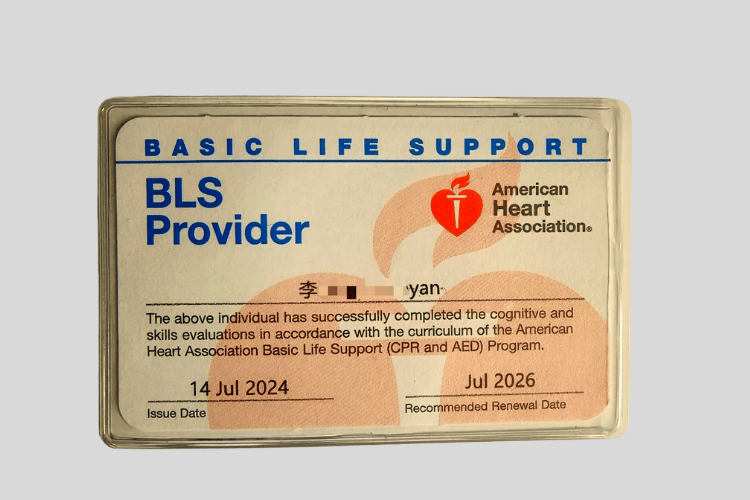
BLS Certification
What is Basic Cardiac Life Support (BCLS)?
BCLS is a specialized subset of BLS, focusing more on cardiac emergencies. It includes advanced techniques for recognizing and managing heart-related conditions, such as:
- Identifying early signs of cardiac arrest or myocardial infarction.
- Administering high-quality CPR with an emphasis on chest compression depth and rate.
- Coordinating with advanced cardiac life support (ACLS) teams for seamless care. BCLS is often tailored for healthcare professionals, providing a deeper understanding of cardiac-specific interventions.

BCLS Certification
Importance of BLS and BCLS Certifications
Certifications in BLS and BCLS ensure individuals are equipped with the knowledge and skills to respond effectively in emergencies. These certifications:
- Enhance Preparedness: Equip responders with confidence and competence in life-saving techniques.
- Improve Outcomes: Increase survival rates by ensuring timely and effective intervention.
- Meet Professional Requirements: Many healthcare roles mandate BLS or BCLS certification as a standard qualification. By obtaining these certifications, individuals contribute to safer communities and better emergency care outcomes.
Key Differences Between BLS and BCLS
Basic Life Support (BLS) and Basic Cardiac Life Support (BCLS) are both essential certifications for responding to medical emergencies, particularly those involving cardiac or respiratory distress. While they share common goals, they differ in scope, target audience, and the skills they emphasize. Understanding these distinctions is crucial for selecting the appropriate certification based on individual needs or professional requirements. This overview highlights the key differences, the content covered in each certification, and variations in course completion cards.
Key Differences Between BLS and BCLS
|
Feature |
BLS |
BCLS |
|---|---|---|
|
Scope |
Broader (covers respiratory and cardiac emergencies) |
Narrower (focuses on cardiac events) |
|
Target Audience |
Healthcare professionals (doctors, nurses, EMTs) |
Lay rescuers, lifeguards, fitness staff |
|
CPR Techniques |
Includes advanced methods (team CPR, bag-valve mask use) |
Basic chest compressions and rescue breaths |
|
Airway Management |
Full training (choking relief, advanced airways) |
Limited to basic airway clearing |
|
Certification Renewal |
Typically every 2 years |
Varies (often aligned with B |
BLS vs. BCLS: Overview of Differences
- Scope: BLS focuses on general life-saving techniques applicable to a wide range of emergencies, including cardiac arrest, choking, and respiratory failure. BCLS, on the other hand, is more specialized, emphasizing cardiac-specific emergencies and advanced interventions.
- Target Audience: BLS is designed for both healthcare providers and lay responders, while BCLS is tailored primarily for medical professionals who require a deeper understanding of cardiac care.
- Complexity: BCLS includes more advanced concepts, such as recognizing cardiac rhythms and coordinating with advanced cardiac life support (ACLS) teams, whereas BLS centers on foundational skills like CPR and AED use.
Content and Skills Covered in Each Certification
- BLS Certification:
-
- High-quality CPR for adults, children, and infants.
- Use of an AED to restore normal heart rhythm.
- Airway management techniques, including rescue breaths and choking relief.
- Emphasis on teamwork and communication during emergencies.
- BCLS Certification:
-
- Advanced recognition of cardiac arrest and myocardial infarction symptoms.
- Detailed instruction on chest compression techniques and rhythm analysis.
- Integration with ACLS protocols for seamless patient care.
- Greater focus on cardiac-specific emergencies and interventions.
Differences in Course Completion Cards
- BLS Cards: Typically issued to a broader audience, including non-medical personnel, and valid for two years. They certify proficiency in basic life-saving techniques.
- BCLS Cards: Often required for healthcare professionals, these cards indicate advanced training in cardiac care and may include additional endorsements for specific skills.
By understanding these differences, individuals can choose the certification that best aligns with their professional responsibilities and preparedness goals.
Understanding CPR in BLS and BCLS
Cardiopulmonary resuscitation (CPR) is a cornerstone of both Basic Life Support (BLS) and Basic Cardiac Life Support (BCLS), serving as a critical intervention for individuals experiencing cardiac arrest or respiratory failure. While CPR is a shared component of both certifications, its application and integration differ based on the scope and focus of each program. This overview examines the role of CPR in BLS, compares CPR training in BLS certification, and explores how BCLS incorporates advanced CPR techniques.
The Role of CPR in Basic Life Support
In BLS, CPR is a fundamental skill aimed at maintaining circulation and oxygenation until advanced care is available. Key elements include:
- Chest Compressions: High-quality compressions at the correct depth and rate to restore blood flow.
- Rescue Breaths: Delivering breaths to ensure oxygen reaches the lungs.
- AED Use: Incorporating an automated external defibrillator to address abnormal heart rhythms. BLS emphasizes simplicity and accessibility, making CPR techniques suitable for both healthcare providers and trained bystanders.
Comparison: BLS Certification and CPR Training
BLS certification provides comprehensive CPR training, covering:
- Techniques for adults, children, and infants.
- Team-based CPR, focusing on effective communication and role delegation.
- Scenarios involving choking or airway obstruction. While standalone CPR training focuses solely on resuscitation, BLS certification integrates CPR into a broader framework of emergency response, including AED use and teamwork.
How BCLS Integrates CPR Techniques
BCLS builds on the foundational CPR skills taught in BLS by incorporating advanced cardiac care principles. This includes:
- Recognition of Cardiac Rhythms: Identifying arrhythmias that require specific interventions.
- Coordinated Care: Integrating CPR with advanced cardiac life support (ACLS) protocols for seamless patient management.
- Enhanced Techniques: Emphasizing precision in chest compressions and ventilation to optimize outcomes in cardiac emergencies. BCLS is tailored for healthcare professionals, providing a deeper understanding of how CPR fits into the continuum of cardiac care.
By understanding the nuances of CPR in BLS and BCLS, individuals can better appreciate the importance of these certifications in saving lives during critical emergencies.
Certification Process for BLS and BCLS
Obtaining certification in Basic Life Support (BLS) or Basic Cardiac Life Support (BCLS) is essential for individuals seeking to develop life-saving skills or meet professional requirements in healthcare. While both certifications share similarities in their processes, they differ in scope and focus. This guide outlines the steps to achieve BLS and BCLS certification and highlights the recertification requirements for maintaining these credentials.
Steps to Achieve BLS Certification
- Enroll in an Accredited Course: Choose a BLS course offered by recognized organizations such as the American Heart Association (AHA) or Red Cross.
- Complete Theoretical Training: Learn the fundamentals of BLS, including CPR, AED use, and airway management, through online modules or in-person classes.
- Participate in Hands-On Practice: Engage in practical sessions to master high-quality CPR techniques for adults, children, and infants.
- Pass the Skills Assessment: Demonstrate proficiency in BLS techniques during a supervised evaluation.
- Earn Certification: Upon successful completion, receive a BLS certification card, typically valid for two years.
Steps to Achieve BCLS Certification
- Select a BCLS Program: Enroll in a course designed for healthcare professionals, often provided by hospitals or training centers.
- Study Advanced Cardiac Concepts: Gain knowledge of cardiac-specific emergencies, including arrhythmia recognition and advanced CPR techniques.
- Participate in Scenario-Based Training: Practice integrating CPR with advanced cardiac life support (ACLS) protocols in simulated emergencies.
- Pass Written and Practical Exams: Demonstrate understanding and application of BCLS skills through comprehensive assessments.
- Receive Certification: Obtain a BCLS certification card, which is also valid for two years.
Recertification Requirements for BLS and BCLS
- BLS Recertification: Complete a renewal course before the certification expires, focusing on updated guidelines and reinforcing core skills.
- BCLS Recertification: Undergo advanced training to stay current with evolving cardiac care practices and maintain proficiency in BCLS techniques. Both certifications require periodic renewal to ensure responders remain prepared to handle emergencies effectively.
Conclusion: Choosing the Right Certification
Selecting between Basic Life Support (BLS) and Basic Cardiac Life Support (BCLS) certifications depends on individual needs, career goals, and the level of expertise required. Both certifications equip individuals with essential life-saving skills, but their focus and application vary. This overview explores the factors to consider when deciding between BLS and BCLS, the career implications of each certification, and final reflections on the importance of life support and first aid training.
Factors to Consider When Deciding BLS vs. BCLS
- Scope of Training: BLS provides foundational skills such as CPR, AED use, and basic airway management, making it suitable for lay responders and healthcare providers alike. BCLS, however, delves deeper into cardiac-specific emergencies, including arrhythmia recognition and advanced CPR techniques.
- Target Audience: BLS is ideal for individuals in non-medical roles or entry-level healthcare positions, while BCLS is tailored for medical professionals requiring advanced cardiac care knowledge.
- Professional Requirements: Certain roles, such as nurses, paramedics, or physicians, may mandate BCLS certification, whereas BLS is often sufficient for other healthcare and community-based roles.
Career Implications of Each Certification
- BLS Certification: Demonstrates competence in basic emergency response, enhancing employability in roles such as first responders, childcare providers, and fitness trainers.
- BCLS Certification: Signals advanced expertise in cardiac care, opening opportunities in specialized healthcare fields and meeting requirements for advanced clinical roles. Both certifications strengthen resumes and prepare individuals to respond effectively in emergencies, but BCLS offers a competitive edge in medical professions.
Final Thoughts on Basic Life Support and First Aid Training
BLS and BCLS certifications play a vital role in fostering preparedness and confidence during emergencies. Whether for personal development or professional advancement, these certifications empower individuals to save lives and contribute to safer communities. Choosing the right certification ensures alignment with career goals and the ability to provide effective care when it matters most.
Frequently Asked Questions
What is the difference between BLS and BCLS certification?
BLS (Basic Life Support) certification focuses on emergency response skills for healthcare professionals, while BCLS (Basic Cardiovascular Life Support) is often used interchangeably with BLS but can also refer to a specific course that targets basic life support skills for non-healthcare providers. Both certifications emphasize cardiopulmonary resuscitation (CPR) and the use of an AED (Automated External Defibrillator).
How does ACLS differ from BLS in emergency situations?
ACLS (Advanced Cardiovascular Life Support) is designed for healthcare professionals who respond to cardiac emergencies. It includes advanced interventions, while BLS focuses on basic life support skills necessary for saving a life during a medical emergency. BLS training covers essential techniques like chest compressions and rescue breaths, which are foundational before advancing to ACLS.
What does a BLS provider course entail?
A BLS provider course includes training on recognizing cardiac arrest, performing CPR, using an AED, and managing airway emergencies. Participants learn the skills needed to provide effective resuscitation and how to respond in emergency scenarios, making the course essential for healthcare professionals and first responders.
Is CPR and BLS training the same?
While CPR (Cardiopulmonary Resuscitation) is a critical component of BLS training, BLS encompasses a broader range of skills, including airway management and the use of an AED. CPR focuses specifically on the techniques of chest compressions and rescue breaths, while BLS provides comprehensive emergency response skills for various medical emergencies.
Who should take a BLS course?
The BLS course is recommended for healthcare professionals, including doctors, nurses, and emergency responders, as well as anyone who wants to gain the skills necessary to provide basic life support in emergency situations. Organizations like the American Heart Association and the American Red Cross offer BLS training to ensure individuals are prepared to act in critical moments.
Can I purchase BLS certification online?
Yes, many organizations offer online BLS courses that can be completed at your own pace, followed by a hands-on skills assessment. These courses culminate in certification, which is typically valid for two years. It's important to ensure that the course is accredited by recognized regulatory bodies to ensure its validity.
What are some key components of BLS training?
Key components of BLS training include recognizing the signs of cardiac arrest, performing high-quality chest compressions, effective rescue breathing, the use of an AED, and understanding the importance of teamwork in emergency response. These skills are crucial in enhancing the chances of survival in cardiac emergencies.
How often should I renew my BLS certification?
BLS certification is typically valid for two years. It is essential for individuals to renew their certification regularly to stay updated on the latest techniques and guidelines in cardiopulmonary resuscitation and emergency response. Regular training ensures that skills remain sharp and effective in real-world scenarios.
The Bottom Line
Both BLS and BCLS certifications save lives, but they serve different purposes. BLS is the gold standard for medical professionals, covering a wider range of emergencies, while BCLS is a streamlined option for those who primarily need cardiac response skills.
Whether you’re a nurse, a teacher, or a fitness trainer, having the right certification ensures you’re prepared to act decisively in an emergency. Check with your employer or certifying body to confirm which training best fits your role—because when seconds count, proper preparation makes all the difference.


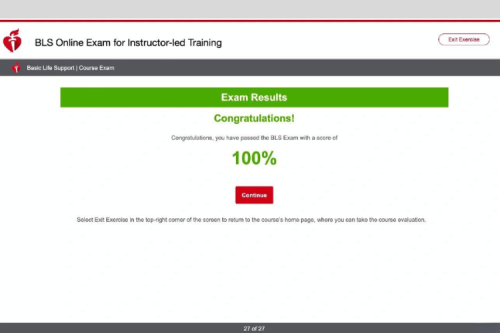
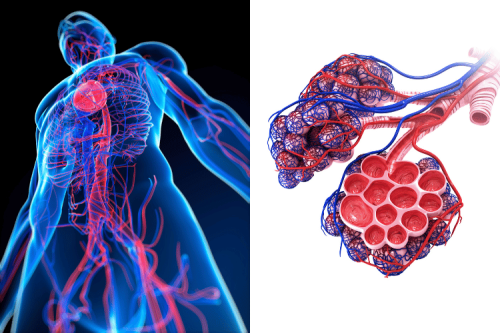

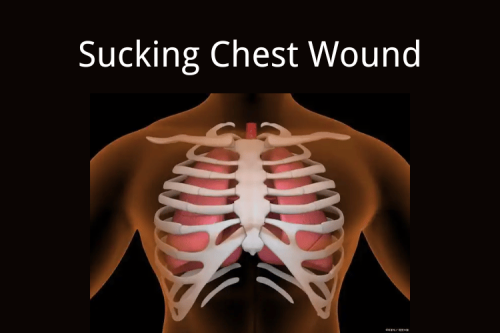

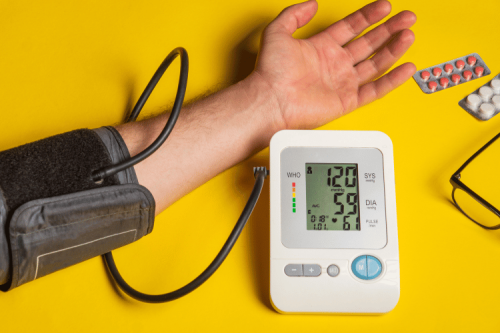
 Login with Google
Login with Google Login with Facebook
Login with Facebook